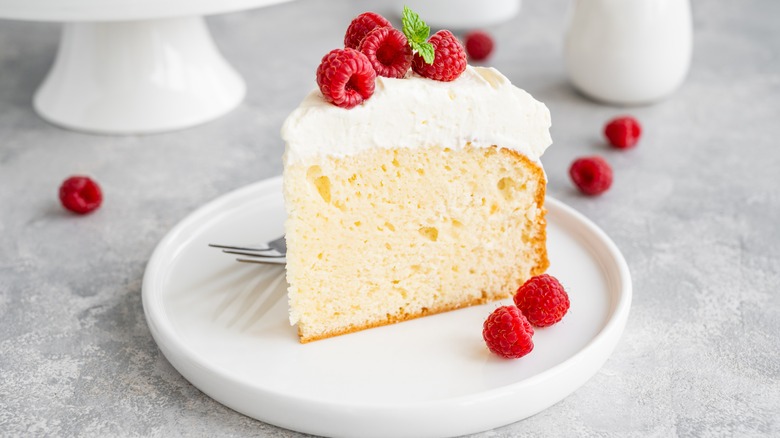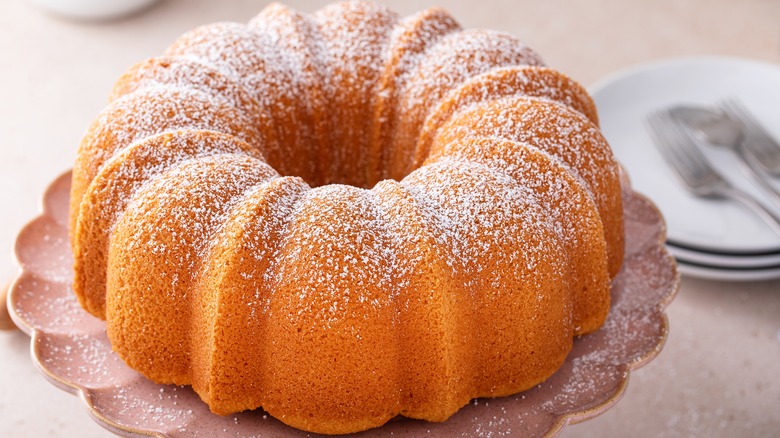What Makes A Traditional Cream Cake Unique?
Whether you prefer a rich, indulgent cake with dense layers of compact crumb or you find yourself reaching for fluffy textures reminiscent of a buoyant cloud, there's one thing we can all agree on: Nobody likes a dry cake (but no judgment here if you do). If you're someone who can't seem to get the moisture levels of a cake just right — or if you just love a no-fuss cake recipe that yields "wow" results — consider trying out a traditional cream cake. Made with heavy whipping cream, cream cake is a simple, dense but still light mashup of regular sponge cake and a pound cake. Here, cream takes the place of milk and butter, so you're also saving money on ingredients. Be sure to put away the half-and-half as you'll need a high-fat cream in this cake.
Let's talk about heavy cream. Heavy cream contains at least 36% fat, making it a richer — and also more ideal — option for dense cakes than vegetable oil or milk. As it takes center stage in a classic cream cake recipe, heavy cream also ensures a moist, velvety consistency that gives it an all-around more unique taste than other cakes with less fat. Because of its high-fat content and luxurious moisture, not many other ingredients need to go inside of the cream cake, characterizing it as an extremely accessible and inexpensive choice. What's more? The heavy cream does most of the work for you, so richness is easily achieved without needing to worry too much about the scientific aspect of baking cakes.
A dreamy vintage delicacy
Online, you'll find cream cake recipes that date all the way back to the 1930s. Back in those days, recipes were often created with less ingredients in mind — venturing out to the grocery store just for cake fixings wasn't as easy as it is today. It's best to keep it simple like how it was intended. However, if you would like to spice things up, no pun intended, you can reach for additions like cinnamon, blueberries, cranberries, nuts, flavored extracts, frostings, and sugar dustings.
Some recipes will have you pour the batter into a bundt pan for a more pound cake-like style, while others call for layers or simply spreading it into a regular round pan. Furthermore, sometimes the cream is whipped prior to adding it to the mixture. Instead of adding the heavy cream in as is, you'll beat it until stiff peaks have formed, and then slowly fold that into the dry ingredients. This version offers a lighter, airer consistency that is perfect for layering or topping with a complimentary whipped frosting.

